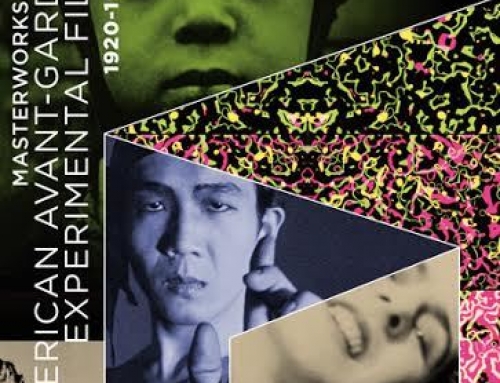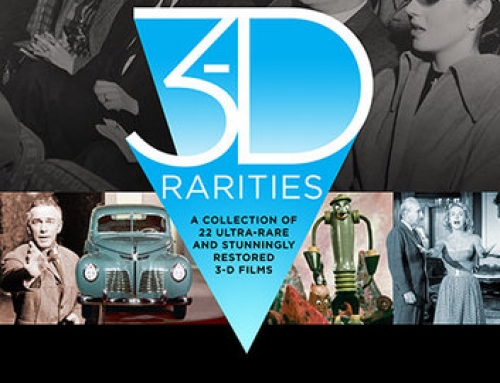A few weeks ago I wrote about a unique home video: Flicker Alley’s 3-D Rarities (see my review here), a fantastic, lovingly compiled collection of movie history focused on 3-D film. Simply put, Flicker Alley is doing vital work bringing cinema history to our homes, and today I want to focus on one that has delighted me as much as any other home video release I’ve encountered this year: The Mack Sennett Collection: Volume One.

For those who do not know, Mack Sennett (1880 – 1960) — whose name today is not nearly as famous as the stars he worked with — was a pioneer of the movies, often thought of as one of the two greatest producers of America’s (if not the world’s) silent era. Sennett started his cinematic career at Biograph Company, working as a writer, actor, and director, honing his craft to produce one of the most important bodies of work at there: the comedies he made at Biograph and, more importantly still, at his own company, Keystone Studios and eventually Mack Sennett Comedies Corporation, in Edendale, California.
Though there were comedies being made elsewhere, at Biograph for instance, Keystone is where classic American slapstick came to be. Keystone is the place where many still famous stars began or at least established their careers. The cover to this edition shows Mabel Normand, Billy Bevan, Ford Sterling, Harry Langdon, Mack Swain, Ben Turpin, and, most famous of all, Charlie Chaplin (whom I’ll be featuring quite a bit on this site over the next couple of months); the back has a portrait of Fatty Arbuckle. Not featured on the package, but importantly represented inside are Gloria Swanson, D.W. Griffith, and W.C. Fields, among many others.
This home video release is three Blu-rays containing 50 — 50! — of Mack Sennett’s films, spanning 1909 – 1933. Most of these are short films, ranging ten to thirty minutes, but there are two features as well: Down on the Farm from 1930 and The Extra Girl from 1923. In all, we have 16 hours and 45 minutes of, sure, important cinematic history — but, more than that, we have hours of enjoyment. These discs contain solid, restored evidence of why these are classic comedies and why the stars are still masters.

Mabel Normand
The earliest film in the set is D.W. Griffith’s The Curtain Pole, written by Sennett and starring him and Florence Lawrence while all were at Biograph. In the third film, A Dash Through the Clouds, we first see Mabel Normand, who will pop up again and again. I had often heard of Normand, and I’d seen 1916’s Fatty and Mabel Adrift, also featured on this disc, but it was eye-opening and exciting to see so much of her work.
We also get 1913’s Bangville Police, which is often wrongly thought of as the first Keystone Cop film. While it isn’t that (it’s the second), it is the one that really got the Keystone Cops out there. Like the calf that features in the story, the group’s initial steps are a bit wobbly, but the mad adventures — surely there were multiple injuries on set? — were enough to keep my kids laughing constantly. Also featuring the Keystone Copes is 1914’s A Thief Catcher, a film that was found only in 2010 at an antiques sale in Michigan; the discovery finally confirmed something that Charlie Chaplin had been claiming: that he was, even if it was only for a bit part, a Keystone Cop.

Louise Fazenda
Disc two starts us in 1917, when Sennett and Keystone were established. The first few films on this disc feature an actress I knew nothing about, Louise Fazenda. I loved her work, and was not surprised to learn that she became a star with Sennett before moving on to more work.
This disc was, indeed, filled with surprises, and I’m still trying to learn more about the stars in them, who are not as famous as the many who began their careers at Keystone in its earliest days.
With disc three, I found more familiar faces such as Billy Bevan, Harry Langdon, Ben Turpin, and even Carole Lombard, who shows up in 1928’s Run, Girl, Run. Towards the end of the disc we find two short films with W.C. Fields’s that were once available on DVD from The Criterion Collection. Here we get The Dentist (which is quite “pre-code”) and The Fatal Glass of Beer, and they look great.
Many of the films come with commentaries by various silent film authorities (including Paul Gierucki, who found the Keystone Cop film with Chaplin), and each disc also has a few supplements, such as newsreel footage, studio rushes, brief footage of the locations, and excerpt from later television shows. They round out the already wonderful package by adding some additional context.
As I mentioned up above, when I watched some of these with my kids (sons aged eight to three — the baby was there, but I don’t know his feelings), they were delighted, and I was delighted by the films and by the great experience. I think this bit of history is important, and I’m thrilled to have the ability to introduce my children to it in their youth. But even at my age, even having seen several of these before (albeit in much rougher shape), there were multiple delights and discoveries.
Again, this is one of the best releases I’ve encountered this year (though it came out in 2014). I’m far from the only one impressed. Last November, the set featured on Kristin Thompson’s “DVDs and Blu-rays for your letter to Santa” (see here), and it recently got a special mention in this year’s Cinema Ritrovato awards.
Wonderful stuff, again lovingly produced, I recommend it as highly as I can.








Amazing stuff. Yes please, Santa!
Can you tell us about the upcoming and properly manufactured 4 disc FATTY ARBUCKLE collection? The previous edition done by Mackinac Media has serious problems with the discs and is being avoided.
Yes, those Mackinac discs have been horrible. I don’t have any insights about anything forthcoming, Mark, but I’ll ask around and see if any promising information crops up.